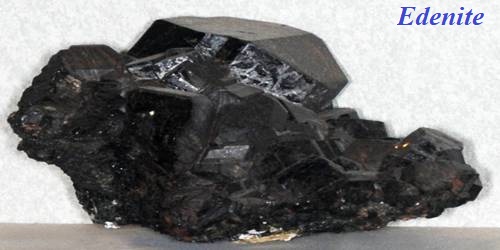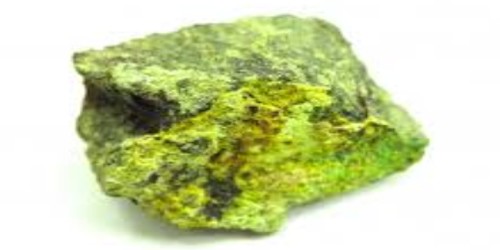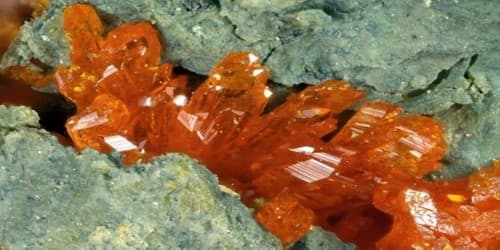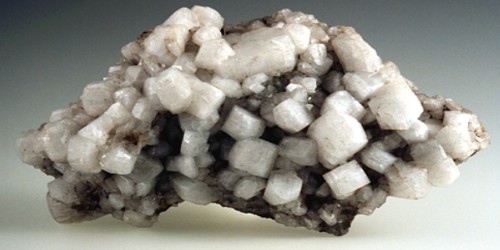Edenite is a double chain silicate mineral of the amphibole group with the general chemical composition NaCa2Mg5(Si7Al)O22(OH)2. It is a monoclinic-prismatic mineral containing aluminum, calcium, hydrogen, magnesium, oxygen, silicon, and sodium. It is an uncommon amphibole mineral.
Edenite is named for the locality of Edenville, Orange County, New York, where it was first described. Another similar mineral to edenite has been proposed called fluoro-edenite which is the same but fluorines would replace the hydroxides.
General Information
- Category: Amphibole mineral
- Formula: NaCa2Mg5(Si7Al)O22(OH)2
- Crystal system: Monoclinic
- Crystal class: Prismatic (2/m) (same H-M symbol)
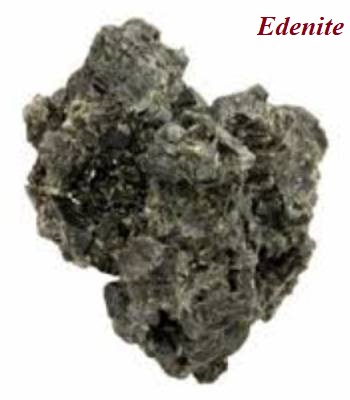
Properties
- Formula mass: 834.25 g/mol
- Color: White to gray, pale to dark green, also brown and pale pinkish-brown
- Crystal habit: Prismatic crystals, fibrous, as reaction rims on pyroxenes
- Fracture: Conchoidal
- Tenacity: Brittle
- Mohs scale hardness: 5–6
- Luster: Vitreous
- Streak: White
- Diaphaneity: Semitransparent
- Specific gravity: 3.05 – 3.37
Occurrence
Edenite has been found primarily in metamorphic rocks, occurring in pods of other magnesium-rich minerals within a marble formation or with garnet-rich lherzolites from deep within the Earth’s crust. Thus, finding edenite in the field can indicate high-temperature regional metamorphism of the surrounding rocks.
This helps to illustrate edenite’s environment of formation which tends to be sodium and aluminum-rich granitic pegmatites and metamorphic skarns.
Information Source;
